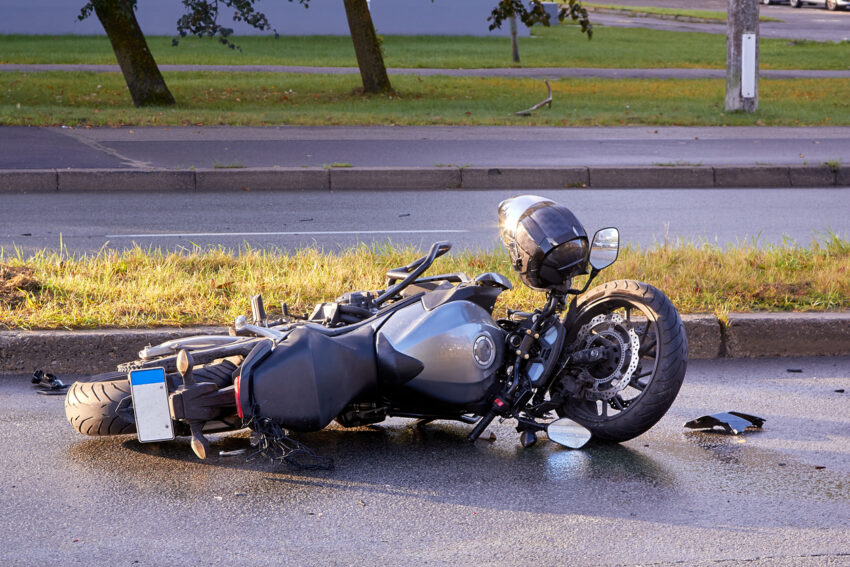Home / Personal Injury Blog / Should You Lay Down Your Motor Bike to Avoid a Crash?

Riding a motorcycle comes with an inherent set of risks, and understanding how to navigate these dangers is crucial for every rider. Among the various pieces of advice shared within the motorcycle community, one controversial topic stands out: the idea of laying down your bike to avoid a crash.
This concept has been a subject of debate among riders for years. However, the truth is clear: this “safety” tip can do more harm than good.
The idea of laying down a motorcycle during a car crash harks back to older times when motorcycle technology was not as advanced as today. Older bikes had less effective brakes and were harder to maneuver, which often made laying them down seem like a viable option to avoid a collision.
However, today’s motorcycles are much more advanced. They have superior braking systems, enhanced maneuverability, and high-performance tires, which make laying the bike down an outdated and unsafe choice. This action causes the bike’s plastic and metal parts to scrape against the ground, potentially leading to uncontrolled sliding. As a result, severe injuries such as brain trauma, spinal fractures, road rash, or broken limbs may occur.
Instead of laying your bike down before an accident, you can take safer steps to reduce the severity of the impact. Here are a few alternatives:
You can also take the following steps to reduce the risk of accidents anytime that you get on your bike:
Practicing basic motorcycle riding safety rules is essential for protecting yourself and others on the road.
Here are some of the most important rules to follow while riding:
Although taking these steps can’t eliminate the risk of injury, it can greatly reduce the risk of accidents and help ensure a safer ride.
When riding in adverse weather conditions, it’s important to adjust your riding style for safety. In the rain, reduce your speed, avoid sudden movements, and be cautious of slippery road hazards. In windy conditions, stay calm, maintain a steady grip on the handlebars, and lean slightly into the wind to help stabilize your ride. For cold weather, dress in layers, protect your extremities, and check your tire pressure, as cold temperatures can reduce it.
Snow and ice can also be extremely dangerous, so it’s best to avoid riding if possible, but if you must, take it slow and avoid hard braking or accelerating. Always stay alert to weather changes and adjust accordingly to stay safe.
Improving your motorcycle riding skills is key to becoming a safer and more confident rider.
Here are some tips:
These tips will help you develop better control, confidence, and safety while riding.
Proper motorcycle gear is essential for your safety and comfort while riding.
Here’s a breakdown of the key gear every rider should wear:
These are the most basic pieces of gear, but there are plenty of other items that can be worn to improve rider safety.
Despite our best efforts, motorcycle accidents can still occur. If you find yourself in this situation, it is important to remain calm, seek medical attention, and contact a lawyer as soon as possible to discuss your legal rights.
An Augusta motorcycle accident attorney will know which option is right for your situation and can assist you on your path to recovery. Schedule a legal consultation immediately to learn more about Georgia’s motorcycle accident laws and take your first steps toward recovery.